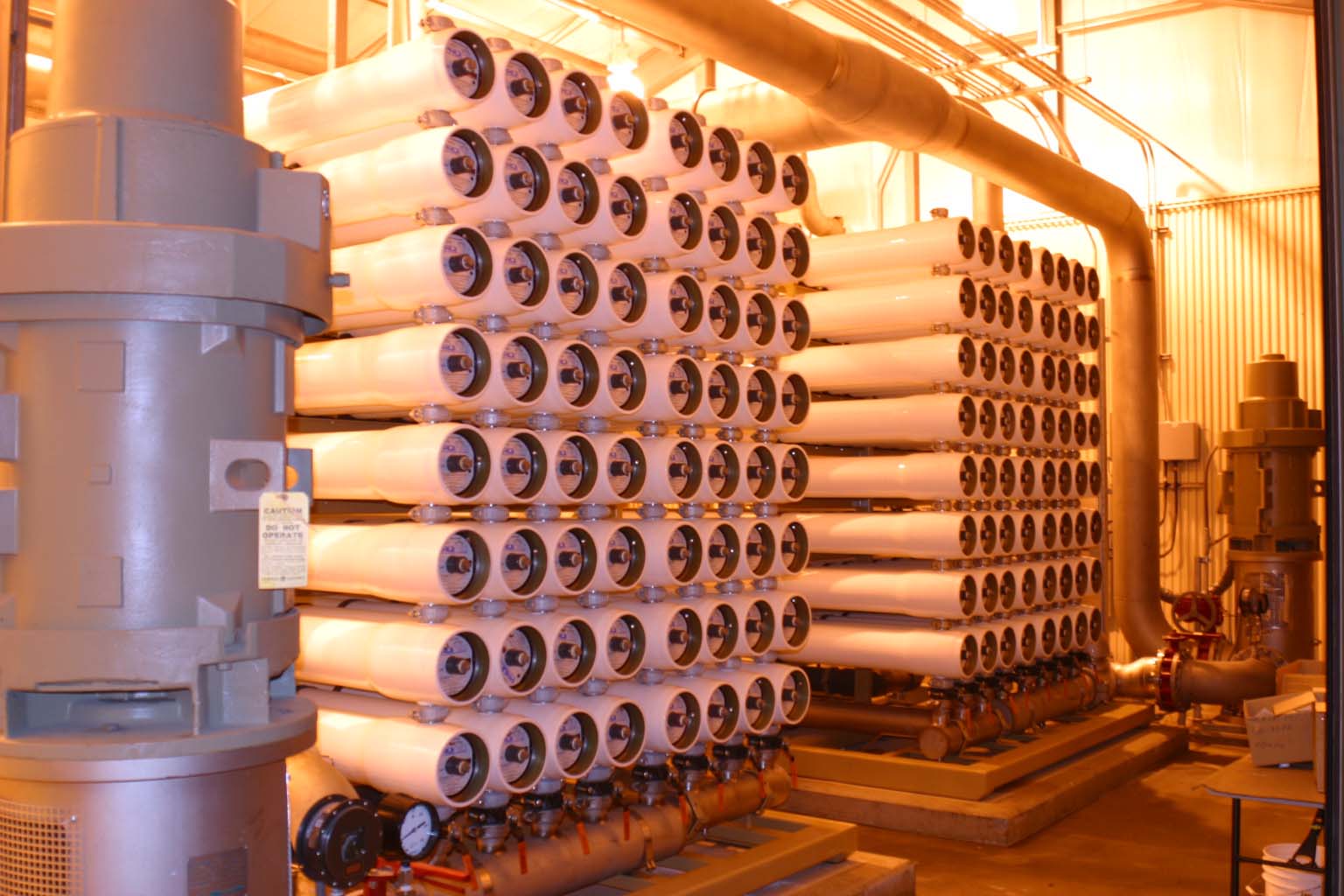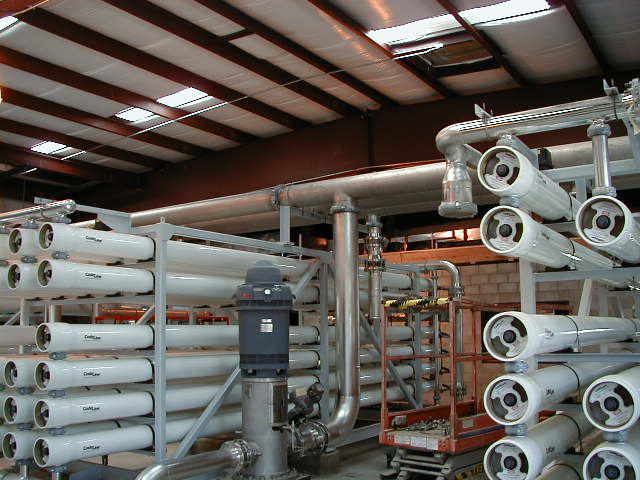
While our planet is blessed with abundant water, with 70% of its surface being covered by the stuff, only a small fraction of it is suitable for consumption. Most of the water on our planet’s surface is saltwater found in our oceans. Some of the remaining water is brackish groundwater and a lot of otherwise acceptable water has been contaminated by human activities. Fortunately, we have developed a variety of methods for treating even highly contaminated (or salty) water to make it usable.
 One of the most capable technologies for treating water is reverse osmosis, a method that can be used to treat a wide range of source waters to remove most contaminants. Reverse osmosis works by using pressure to force water through a “semipermeable” membrane, which allows water to pass through faster than contaminants, such as salt. This produces a high-quality “permeate,” with most of the salt removed, and a “concentrate” stream with the removed salts carried in a portion of the remaining water. Reverse osmosis is a broad-spectrum treatment process– this single treatment step removes most types of contaminants at one time.
One of the most capable technologies for treating water is reverse osmosis, a method that can be used to treat a wide range of source waters to remove most contaminants. Reverse osmosis works by using pressure to force water through a “semipermeable” membrane, which allows water to pass through faster than contaminants, such as salt. This produces a high-quality “permeate,” with most of the salt removed, and a “concentrate” stream with the removed salts carried in a portion of the remaining water. Reverse osmosis is a broad-spectrum treatment process– this single treatment step removes most types of contaminants at one time.
MKN’s engineers have designed dozens of reverse osmosis plants. These plants range from major seawater desalination systems to inland systems for small communities that depend on groundwater for their primary water source. As with all technologies, there are potential problems that come with reverse osmosis. Thankfully, our vast experience means we’ve dealt with all of them and are able to apply that experience to help protect our clients from pitfalls.



